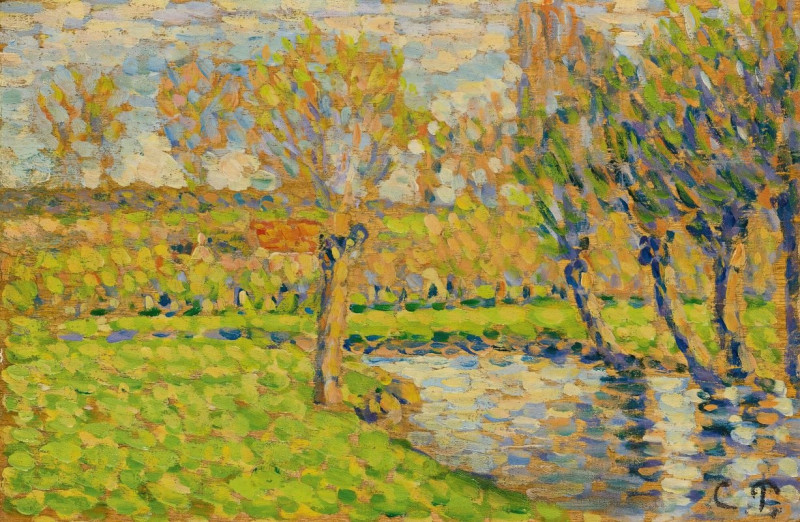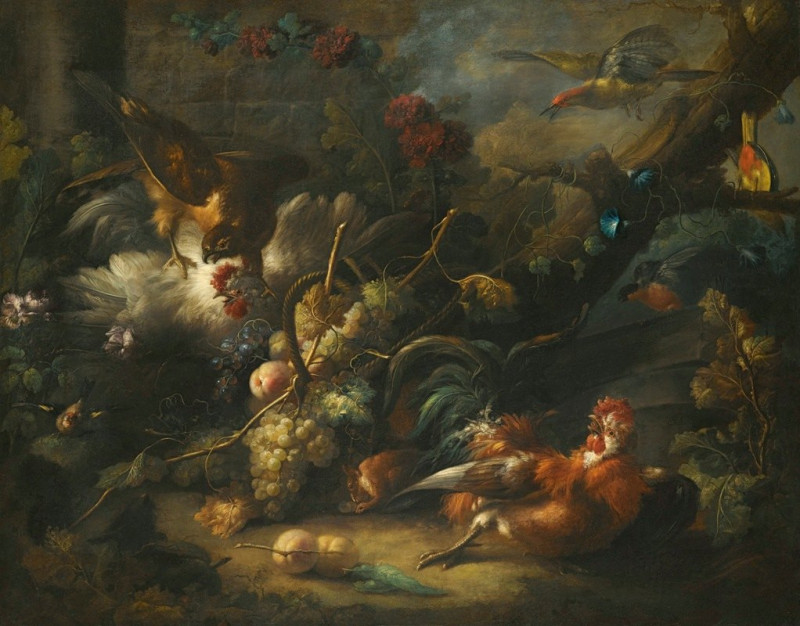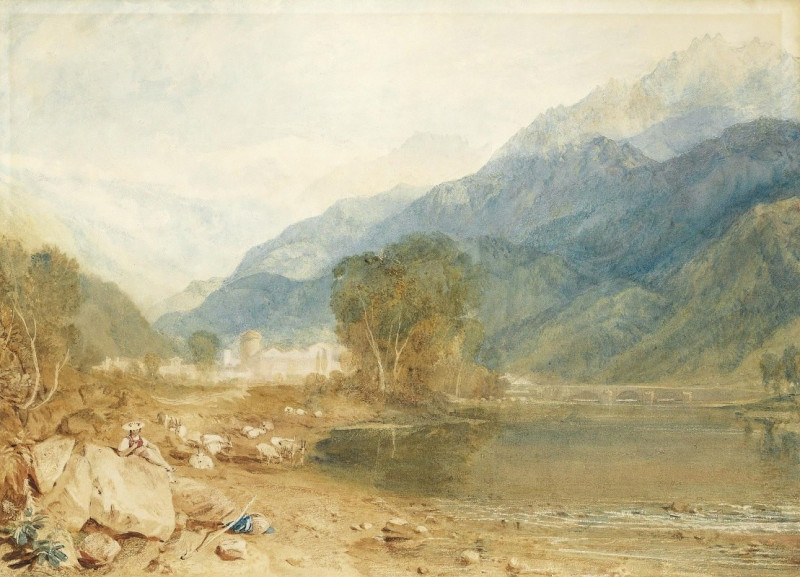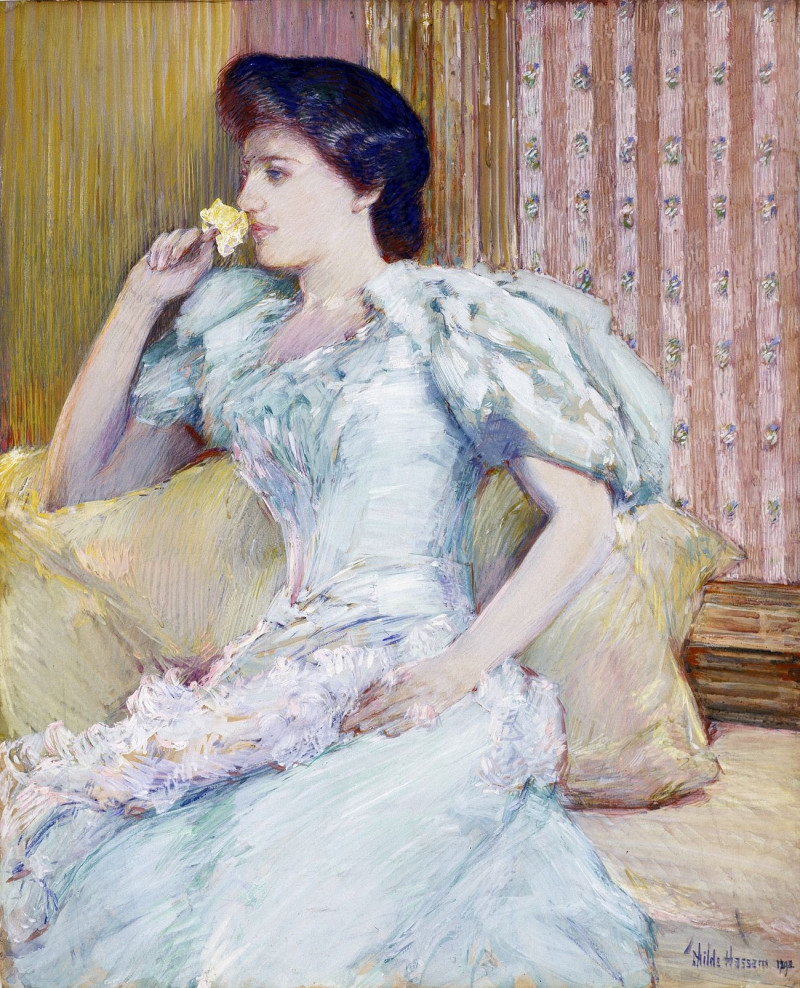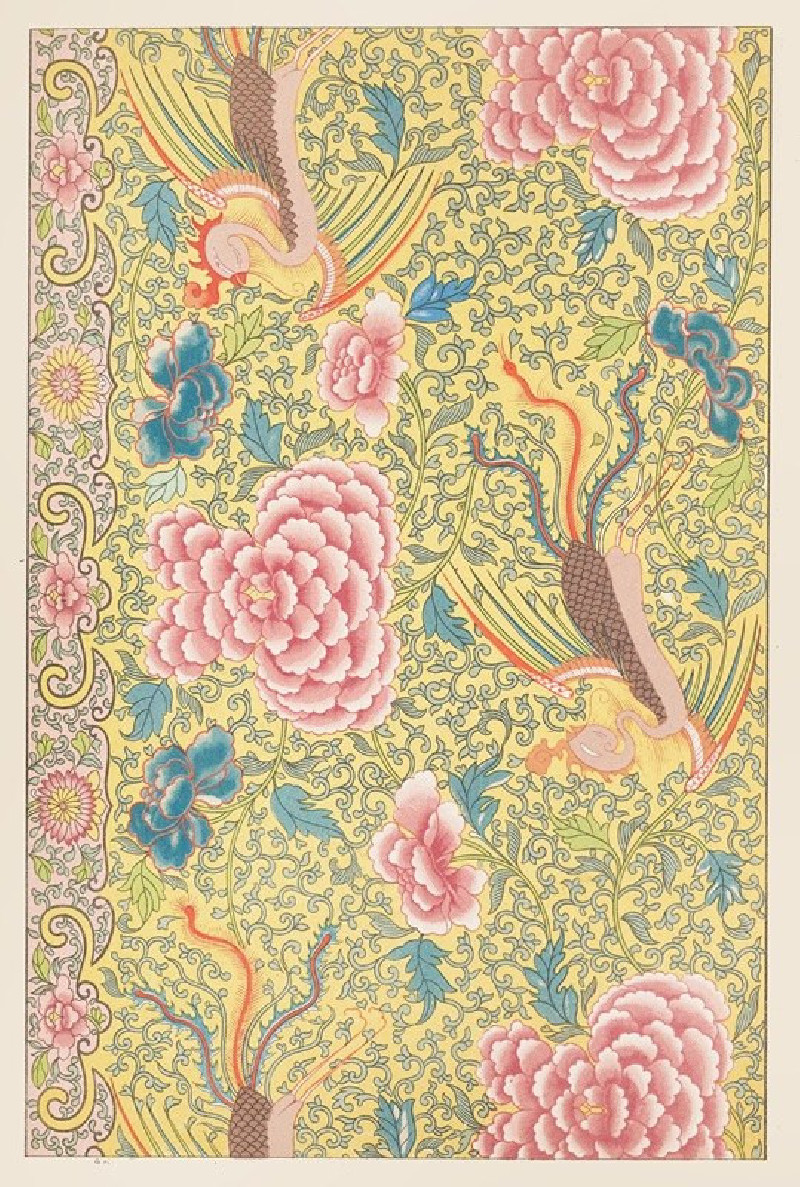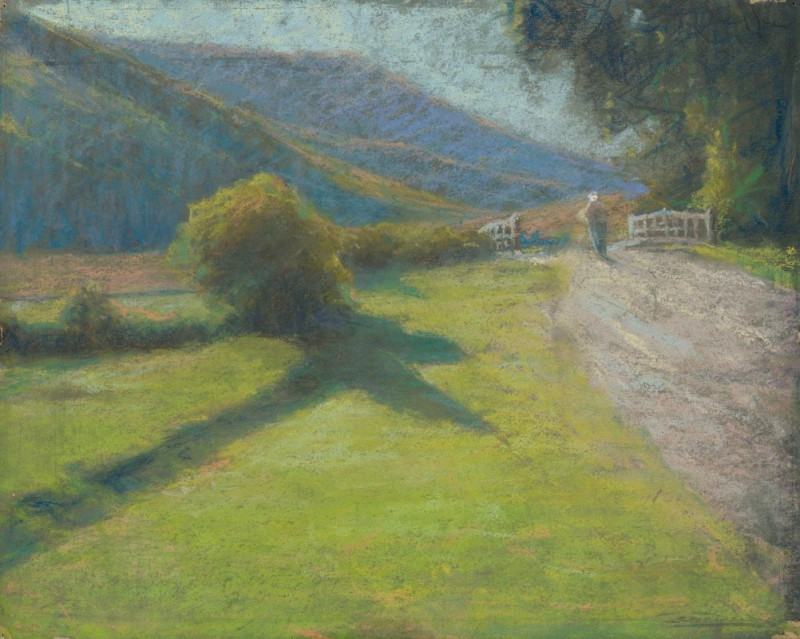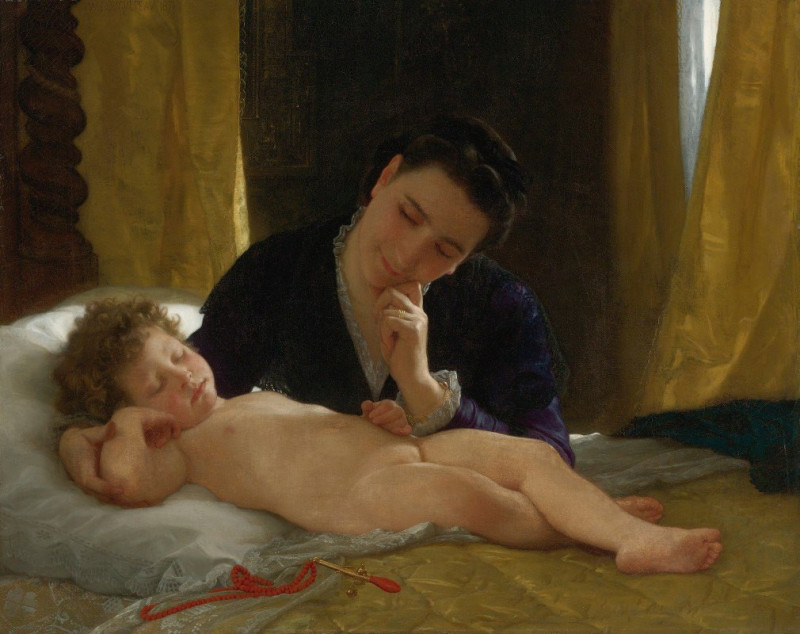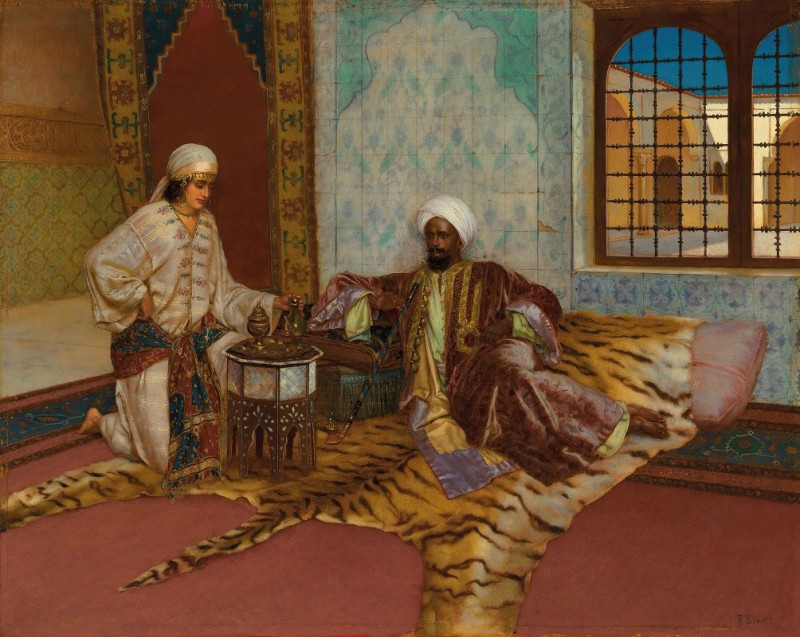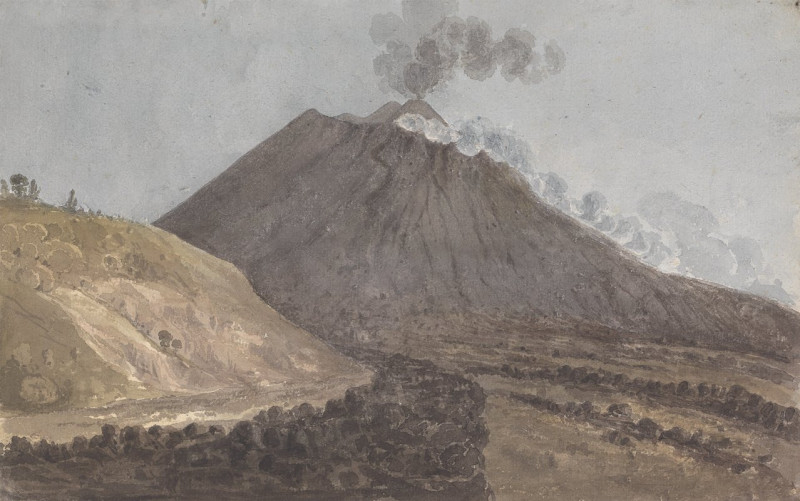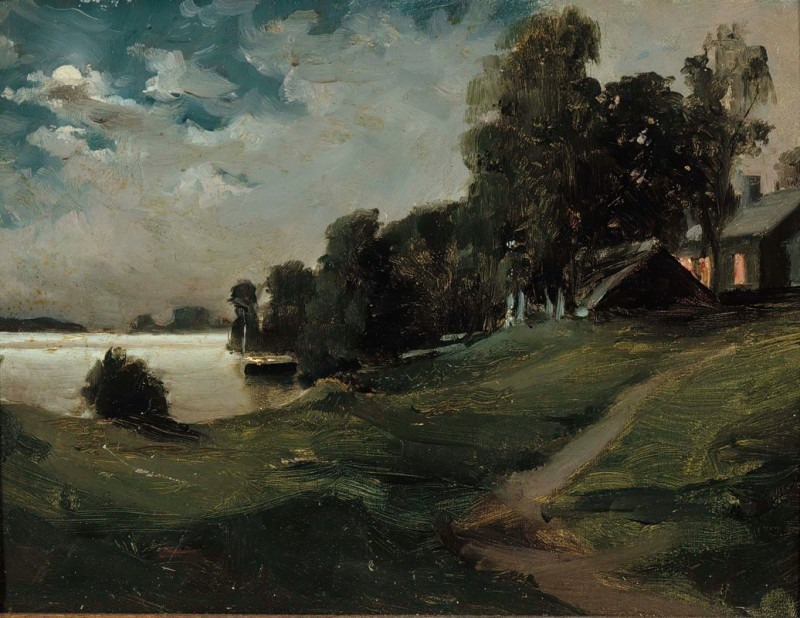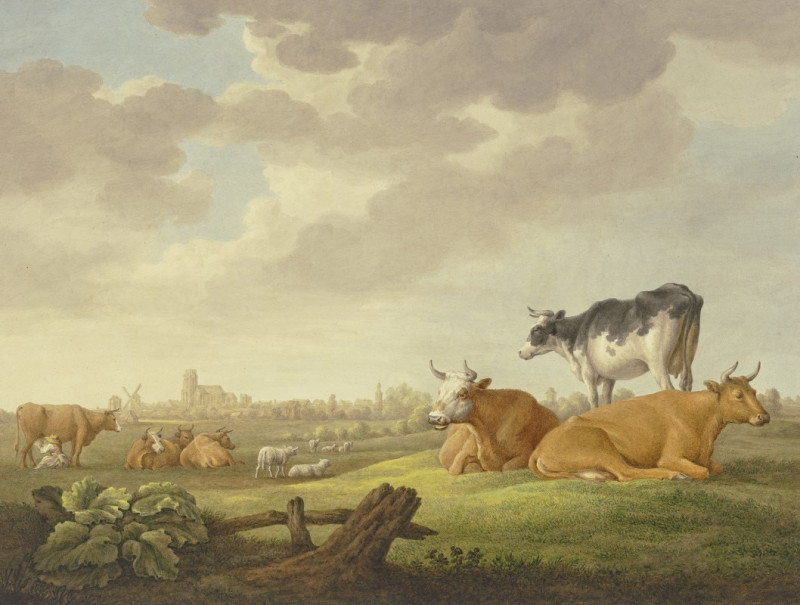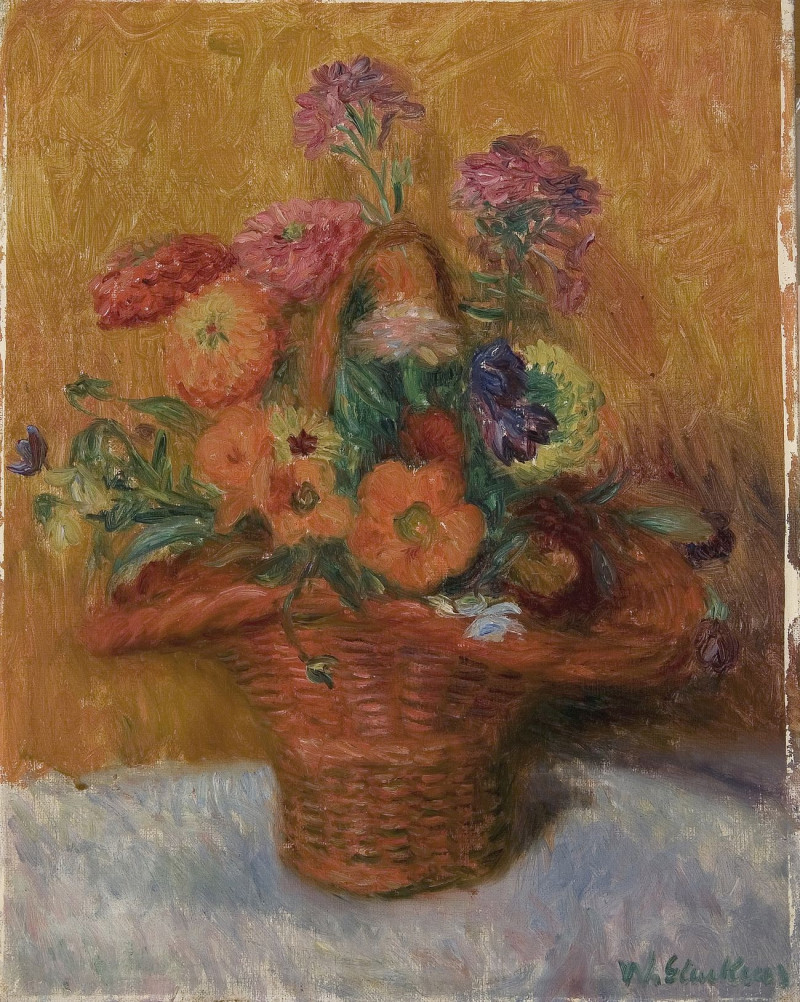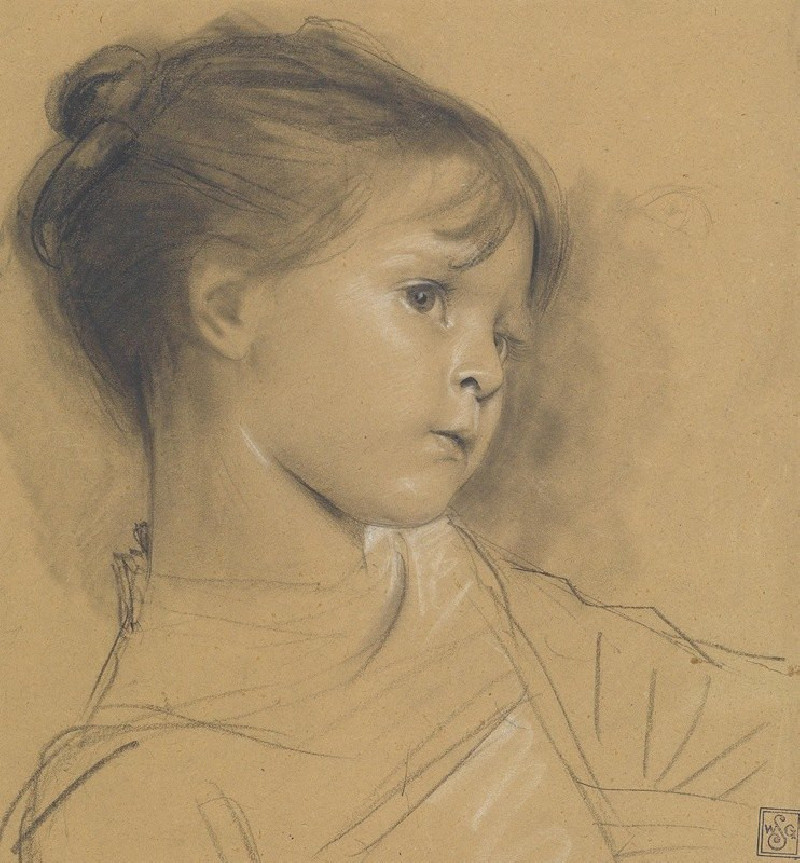Bords De L’Epte À Éragny
Technique: Giclée quality print
Recommended by our customers
More about this artwork
Camille Pissarro's "Bords De L’Epte À Éragny" is a vivid depiction of the serene landscape surrounding the Epte River at Éragny, where the artist spent the later years of his life. Created using the technique of Divisionism, this work features small, distinct dots of color that blend together to form a luminous and harmonious image, a technique Pissarro experimented with during the 1880s under the influence of Georges Seurat and Paul Signac.This painting presents a tranquil riverscape bathed in natural light, showcasing Pissarro’s mastery in capturing the essence of the rural French countryside. The foreground is dominated by lush greenery, with vibrant patches of grass and blooming flowers that seem to sprawl lazily towards the winding river. The river itself, a central element in this composition, mirrors the sky's soft blue and gentle clouds, enhancing the sense of depth and space.To the sides, trees dressed in the colors of early fall - yellows, oranges, and lingering greens - frame the riverbank, their reflections subtly dancing in the flowing water. The rhythmic brushstrokes convey the gentle breeze and the peaceful rhythm of nature, inviting the viewer to pause and appreciate the tranquility of the scene."Bords De L’Epte À Éragny" not only reflects Pissarro’s love for the landscape but also illustrates his continuous exploration of color theory and his commitment to expressing nature’s ever-changing qualities.
Delivery
Returns
Blessed are they who see beautiful things in humble places where other people see nothing. — Camille Pissarro
Camille Pissarro (1830-1903) was born on St.Thomas (now the US Virgin Islands) to a Portuguese father and a Dominican mother. He went to Paris to study art at Ecole des Beaux-Arts. He was an early pioneer of pointillism and neo-impressionism and later became a mentor of many famous impressionist painters including Cezanne, Manet, Renoir, and Gauguin. His paintings depicted rural and urban French landscapes and lifestyle. Many of his works politically captured images of peasants and laborers. Today, he is considered the father of impressionism.

